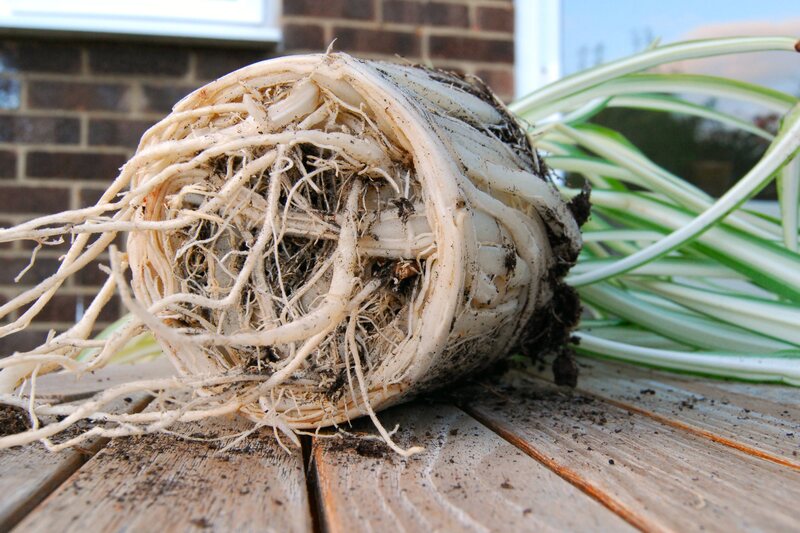Defensive Strategies for Weatherproofing Your Garden
Posted on 27/05/2025
Defensive Strategies for Weatherproofing Your Garden
Gardening is a cherished hobby and a way to connect with nature, but facing unpredictable weather can turn this pursuit into a constant battle. From lashing rains to relentless sun, gardeners confront numerous environmental threats. Effective defensive strategies for weatherproofing your garden are critical for nurturing hearty plants and maintaining a thriving outdoor oasis. In this comprehensive guide, we'll explore weatherproofing methods, provide actionable gardening tips for every climate, and help ensure your garden remains resilient through the seasons.
Why Weatherproof Your Garden?
Weatherproofing your garden isn't just about shielding plants from storms--it's about building resilience and maximizing your efforts year-round. From cold snaps that can freeze tender shoots, to scorching heat waves that parch the soil, preparing for weather extremes ensures hardier plants, reduces replanting, and helps you conserve water and resources.
- Protects your investment: Gardening can be costly. Weatherproofing minimises plant losses.
- Encourages biodiversity: A weather-resistant garden supports a wider array of pollinators and wildlife.
- Reduces resource waste: Efficient use of water, mulch, and covers conserves valuable resources.
- Boosts yields: Resilient plants are healthier and more productive.

Understanding Your Garden's Unique Weather Risks
Before implementing any defensive strategies for weatherproofing your garden, evaluate specific challenges in your location. Climates can vary dramatically, even within short distances. Whether you're battling torrential rainfall, unexpected frost, extreme winds or long droughts, identifying threats is the foundation of your defensive strategy.
Common Weather Risks for Gardens
- Heavy rains leading to soil erosion or root rot
- Prolonged drought causing water stress and plant die-off
- Frost and freezing temperatures killing tender plants
- High winds breaking stems and branches, uprooting plants
- Hail and ice storms damaging leaves and flowers
- Intense sun and heat causing sunburn and dehydration
Essential Defensive Strategies for Weatherproofing Your Garden
1. Soil Preparation and Mulching
Your garden's defense system starts below ground. Healthy soil offers natural protection from both drought and heavy rain. The addition of organic matter, such as compost or well-rotted manure, improves drainage and moisture retention.
- Mulching: Apply a 2-3 inch layer of organic mulch (e.g., bark, straw, or wood chips) around plants. Mulch insulates roots, moderates temperature, suppresses weeds, and conserves soil moisture during dry spells.
- Improve drainage: Incorporate sand or grit into clay-heavy soils and raise beds if flooding is an issue. Raised beds also warm up faster in spring.
- Soil testing: Conduct regular tests to monitor pH and nutrient levels for best plant health.
2. Strategic Plant Selection for Resilience
One of the most important weatherproofing strategies is to choose the right plants for your specific conditions. Native species or climate-adapted plants are generally more resilient to local extremes.
- Drought-tolerant plants: Lavender, sedum, Russian sage, and ornamental grasses thrive in arid climates.
- Flood-resistant plants: Ferns, marsh marigolds, and swamp milkweed handle saturated soils.
- Cold-hardy plants: Evergreens, yarrow, hellebores, and kale tolerate frosty conditions.
- Salt-tolerant varieties: For coastal areas, consider sea thrift, rugosa roses or beach grass.
Mix annuals and perennials to ensure that some plants survive no matter the weather; diversity builds flexibility into your garden.
3. Windbreaks and Shelterbelts
Wind can damage or stress plants, so creating barriers is a proven method for weatherproofing gardens against high winds.
- Living windbreaks: Plant rows of dense shrubs, trees, or hedges (like arborvitae, privet or juniper) as barriers.
- Artificial screens: Erect fences, trellises, or latticework. Use materials that allow some airflow for the best protection.
Position windbreaks on the side of prevailing winds and leave small gaps to avoid turbulence. Shelterbelts not only protect plants--they can help reduce soil erosion and create microclimates for sensitive species.
4. Water Management Systems
Managing water is vital in both rainy and dry climates. Efficient irrigation and drainage keep your garden healthy regardless of weather extremes.
- Rain gardens: Create shallow basins planted with water-loving species to capture runoff and filter pollutants.
- Drip irrigation: Provides slow, consistent water directly to roots, minimizing evaporation and runoff.
- Soaker hoses: Distributes moisture evenly at soil level, ensuring deep root watering.
- Rain barrels: Collect roof runoff to water your garden during dry periods.
- French drains and trenches: Divert excess water away from susceptible areas.
5. Protective Covers and Garden Structures
Upgrading your garden's physical defenses is an effective way to weatherproof fragile plants from hail, frost, intense sun or scorching winds.
- Row covers: Lightweight fabric covers shield plants from frost, wind and pests while letting in light and water.
- Cold frames & greenhouses: Provide controlled, insulated environments for seed starting, tender plants, or winter crops.
- Shade cloths: Drape over sensitive crops during heatwaves to prevent scorching and wilting.
- Cloches: Use bell-shaped covers on individual plants for frost protection.
- Frost blankets: Lay over crops before expected cold snaps to hold in warmth.
Ensure you anchor any covers securely to prevent wind from blowing them away, and remove or vent covers on sunny days to avoid overheating plants.
6. Garden Layout and Microclimate Creation
The design of your garden can help you hedge against weather extremes by manipulating sun, wind, and moisture at the micro level.
- Positioning: Place tender plants in sheltered spots, such as near walls or fences that absorb heat and block wind.
- Terracing and contouring: On sloped sites, create terraces or swales to control runoff and conserve water.
- Companion planting: Group taller plants to provide shade or wind shelter to shorter, sensitive species.
- Reflective mulches or surfaces: Use light-colored mulches to reduce soil temperature during heatwaves.
Building microclimates may allow you to grow plants otherwise unsuited to your zone by making small but significant modifications to temperature or moisture.
Special Strategies for Threat-Specific Weatherproofing
Protecting Against Excessive Rain and Flooding
- Elevate garden beds to reduce waterlogging.
- Keep heavy clay soils open with organic matter and sand.
- Install drains or redirect runoff away from the main planting area.
- Choose water-tolerant plants in low spots.
Defending Against Drought and Heatwaves
- Apply thick mulch to reduce water loss.
- Water deeply, but less frequently, to encourage deep roots.
- Harvest and store rainwater for dry periods.
- Use drought-tolerant varieties and group plants by water needs.
Shielding Your Garden from Frost and Snow
- Use floating row covers and frost cloths for low overnight temperatures.
- Mulch heavily before the first frost to safeguard root systems.
- Cluster pots and containers together in sheltered spots or move them indoors if possible.
- Opt for cold-hardy crops for the winter season.
Guarding Against Wind and Storms
- Stake or cage tall and brittle plants to prevent breakage during gales.
- Prune trees and shrubs to remove dead or weak branches.
- Install windbreaks or screens as detailed earlier.
- Secure loose structures like trellises, greenhouses, and fences.
Weatherproofing Throughout the Seasons
Spring
- Prepare beds early to avoid compaction from late-winter rains.
- Watch for late frosts and keep covers handy for young plants.
- Start seeds indoors or under protection if you expect volatile spring weather.
Summer
- Monitor moisture daily during hot spells.
- Increase mulch depth as weather heats up.
- Use shade covers on especially hot days.
Autumn
- Prepare for heavy rains by clearing gutters and drains.
- Plant ground covers to protect against soil erosion in wet areas.
- Start fall and overwintering crops when temperatures decline.
Winter
- Mulch all perennial beds heavily to insulate roots.
- Ensure structures are secure for snow and wind.
- Keep pathways clear to access garden on mild days.

Advanced Weatherproofing: Smart Technology in the Garden
For those seeking cutting-edge defensive strategies for weatherproofing gardens, smart technology offers new levels of protection and efficiency.
- Soil moisture sensors: Track exactly when watering is needed, eliminating waste.
- Weather monitoring apps: Provide up-to-date forecasts so you can plan garden defenses in advance.
- Automated irrigation systems: Customize watering routines based on rainfall, soil type, and plant needs.
- Frost alarms: Alert you before dangerous temperatures set in, so you can deploy covers or move containers.
Integrating technology with classic weatherproofing techniques ensures you're never caught unprepared.
Conclusion: Proactive Defense Is the Key to a Resilient Garden
A strong, weatherproof garden doesn't happen by accident. With careful planning and the right strategies, any gardener can build defenses against wind, rain, freezing, heat, and more. By combining smart plant selection, soil management, physical barriers, and the latest technology, your garden can thrive no matter what the weather brings. Adopt these defensive strategies for weatherproofing your garden to protect your plants, boost yields, and enjoy a beautiful outdoor oasis through every season.
Remember: Successful gardening is as much about responding to challenges as it is about enjoying the rewards!
Looking for more tips on building a weather-resilient landscape? Explore our in-depth guides on garden protection, resilient landscapes, and climate-smart planting to transform your yard into a true sanctuary--rain or shine!

